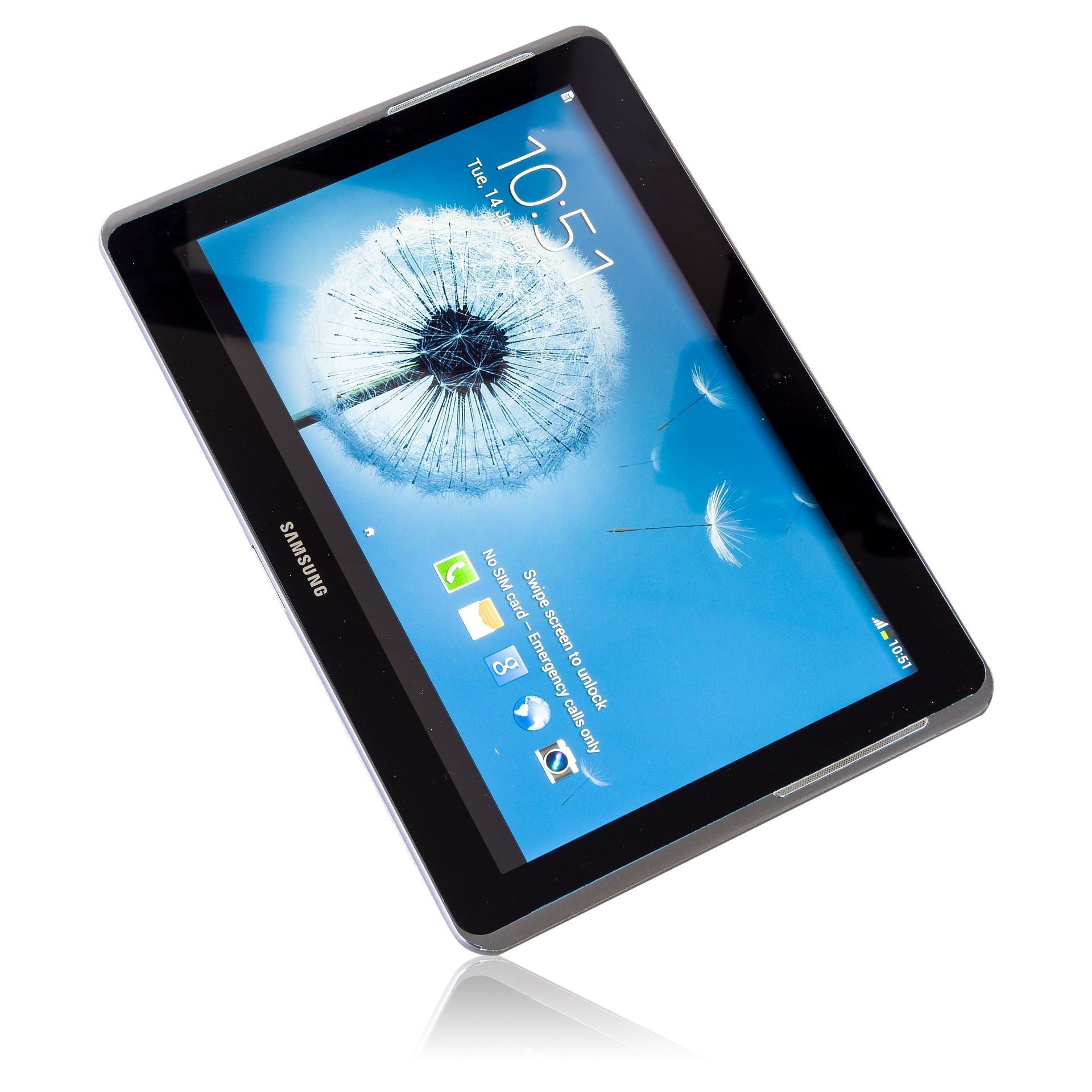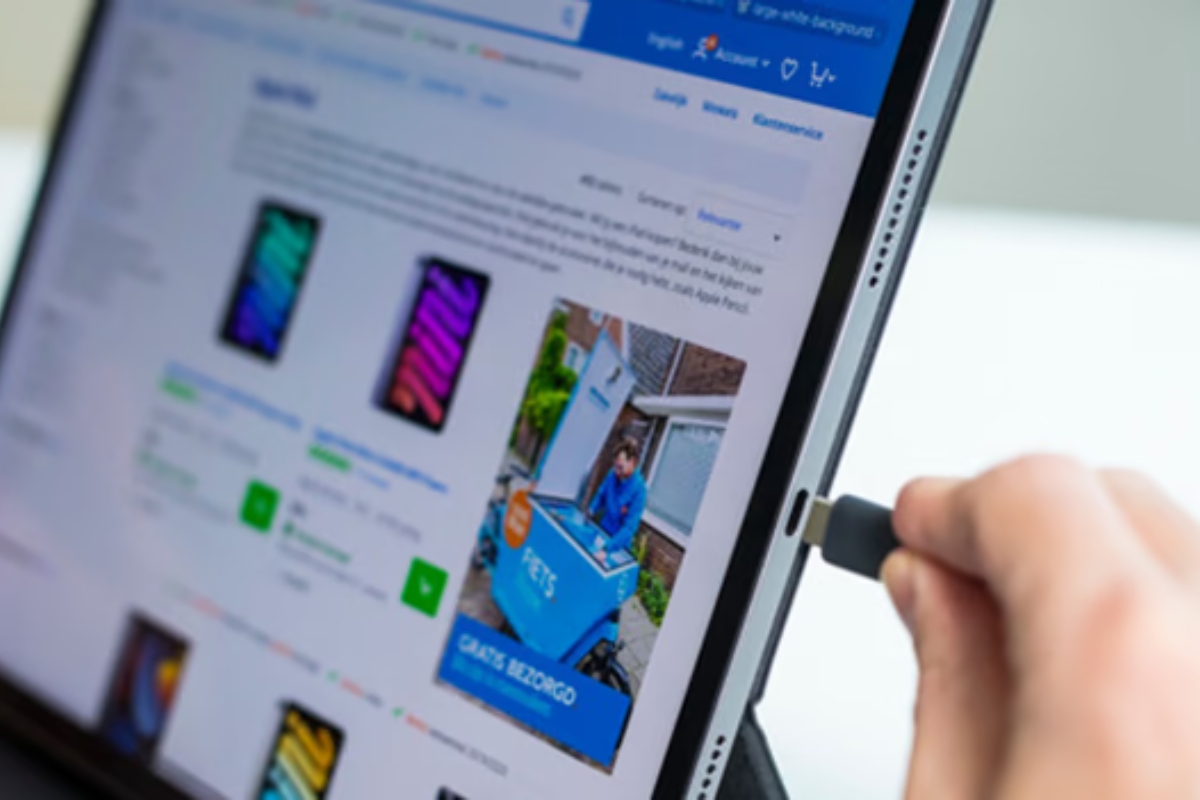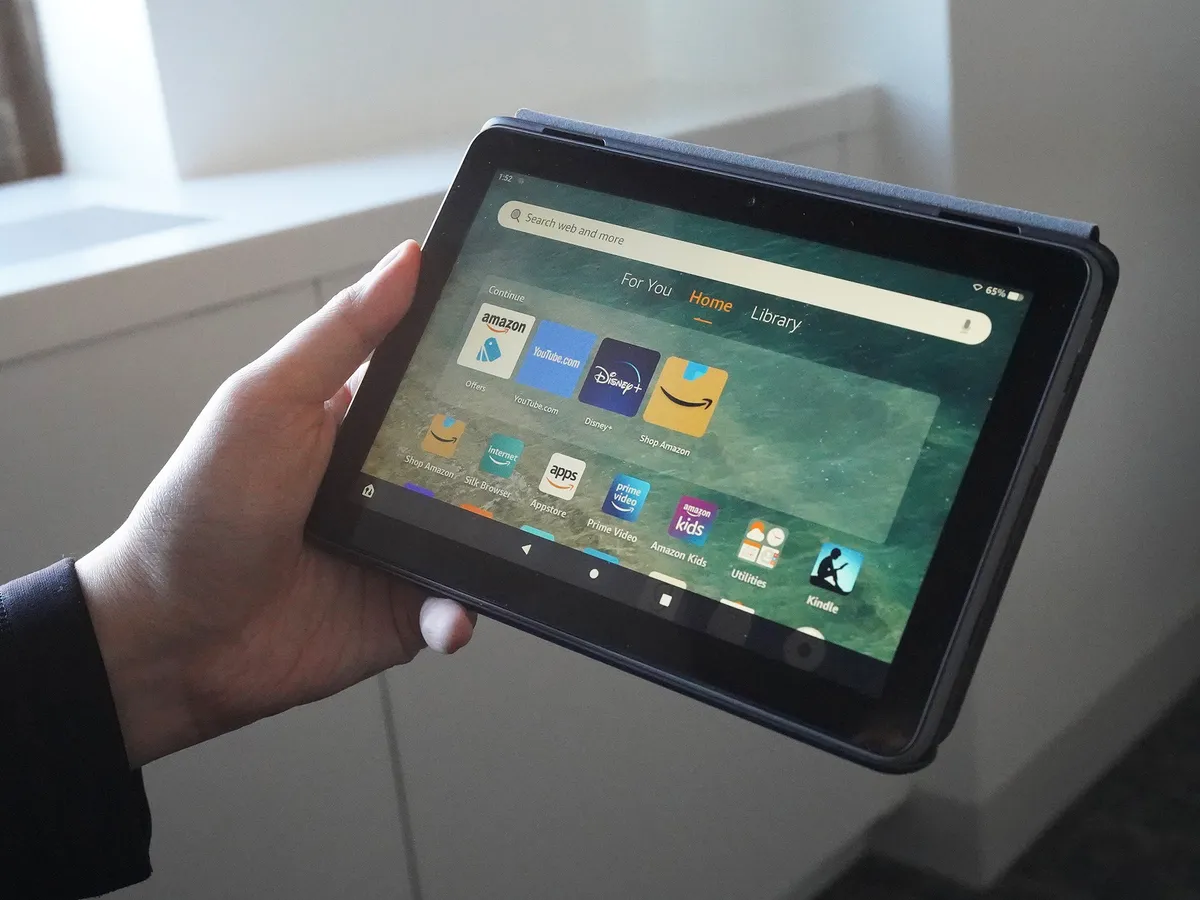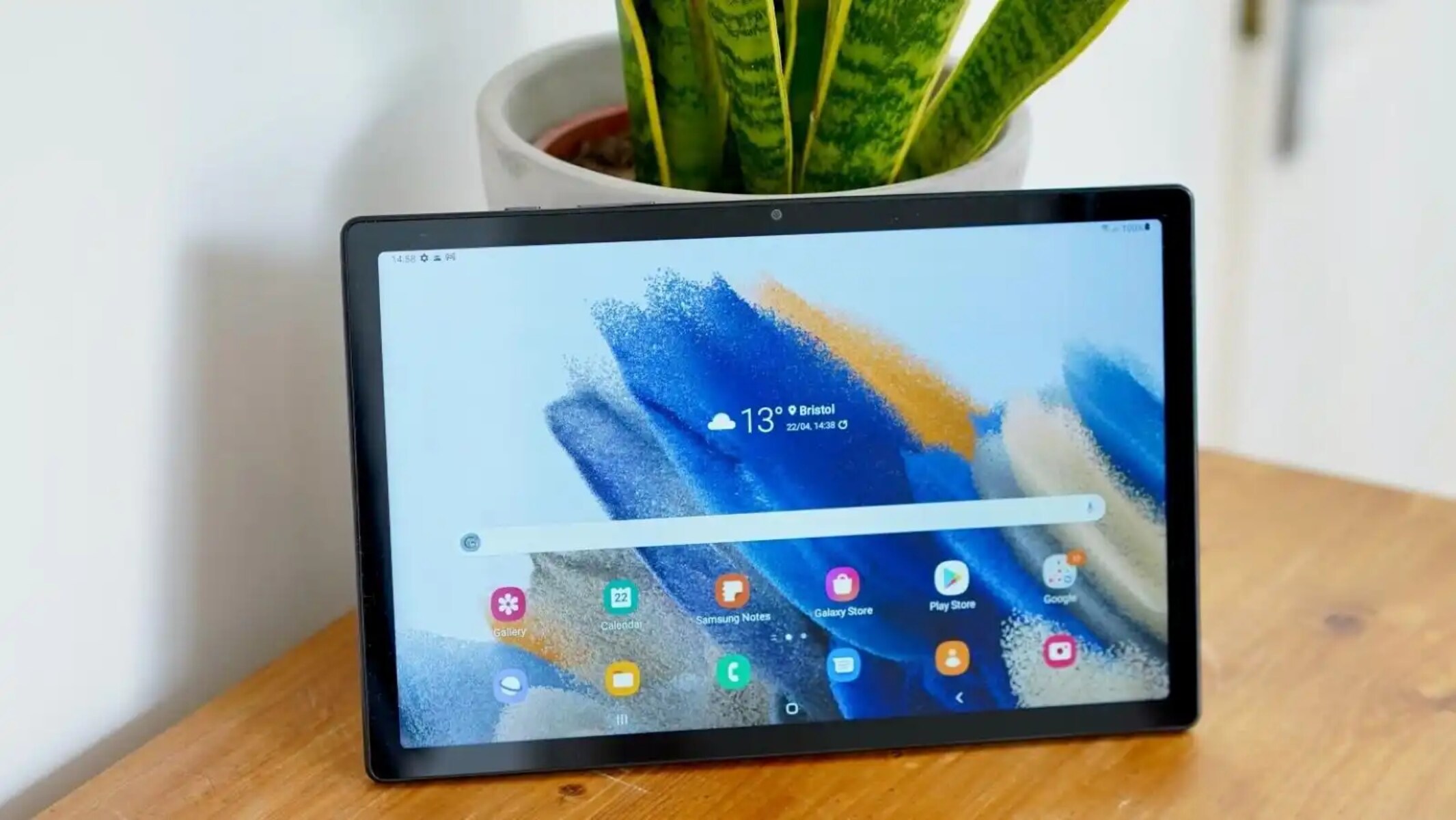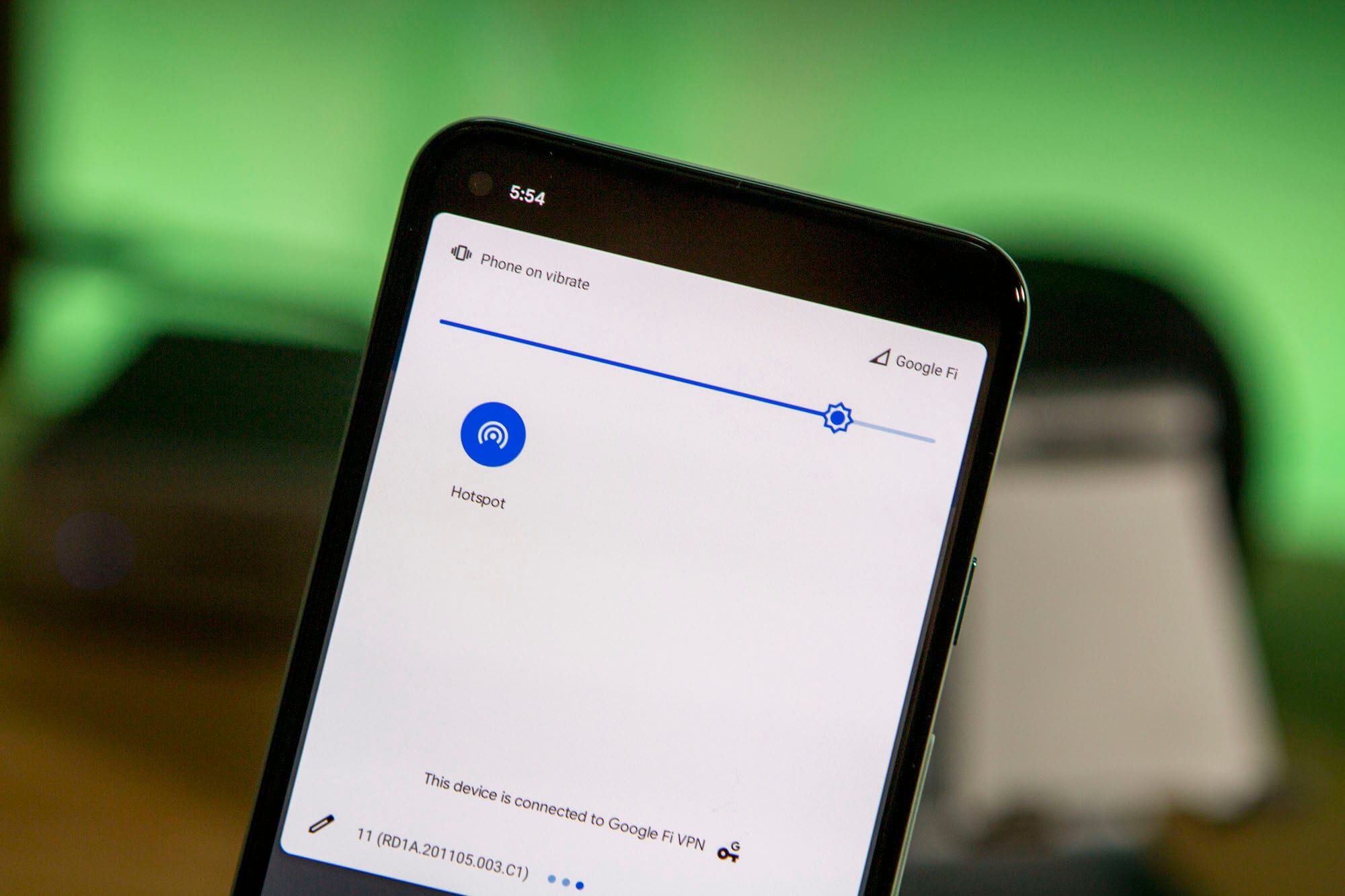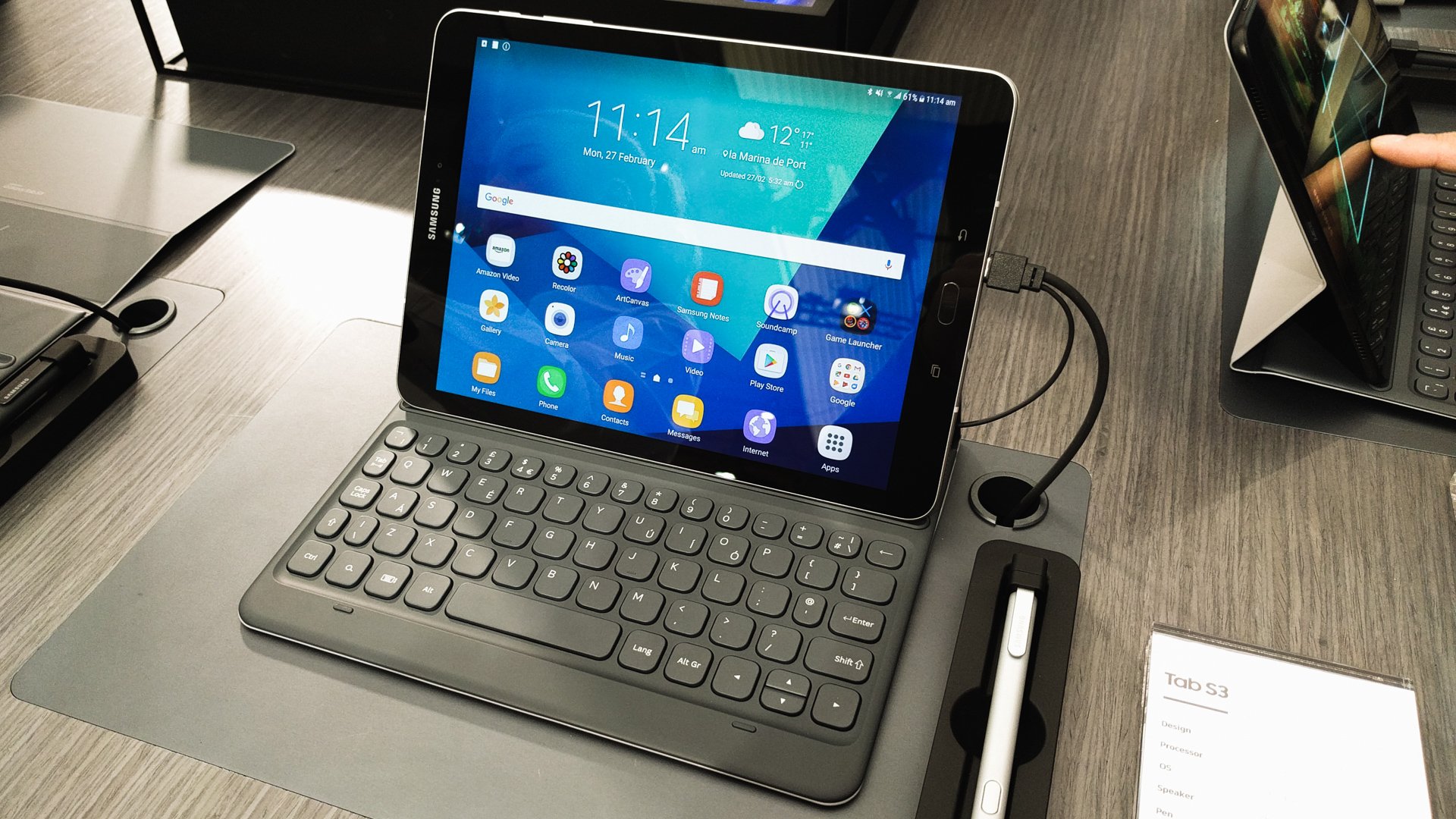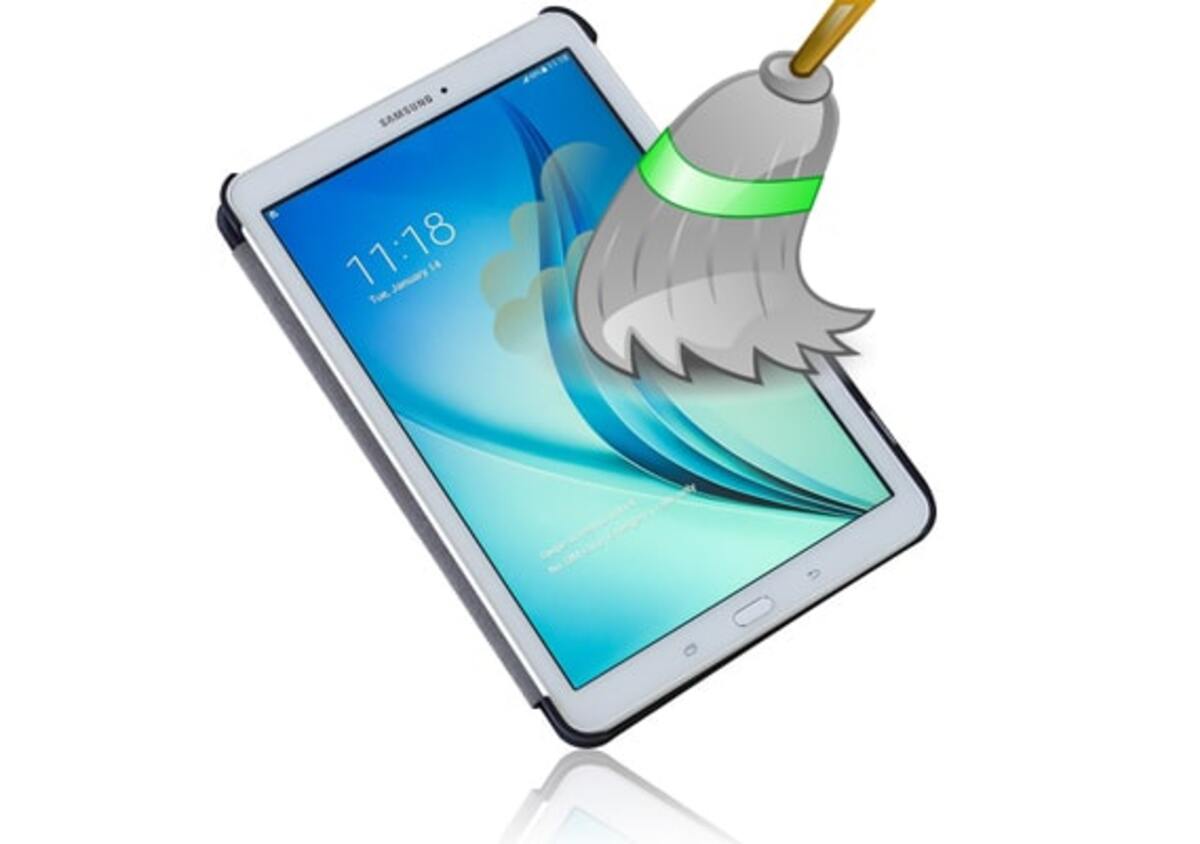Introduction
Is your Samsung Galaxy tablet running frustratingly slow? Don’t worry, you’re not alone. Many users experience sluggish performance on their devices, and it can be a real nuisance. From delayed app launches to laggy multitasking, a slow tablet can impact your productivity and enjoyment.
There can be several reasons why your Samsung Galaxy tablet is running slow. It’s essential to identify the root cause before taking any steps to resolve the issue. In this article, we’ll explore the various factors that can contribute to a slow tablet and provide you with effective tips to speed it up.
Before we dive into troubleshooting, it’s essential to understand that technological devices, including tablets, can experience performance deterioration over time. As you install and use apps, browse the internet, and download files, your tablet accumulates data and processes that can impact its speed and responsiveness.
Additionally, software and hardware advancements outpace the capabilities of older devices, which can lead to slower performance as you continue to use them with newer applications and features. However, by implementing a few simple steps, you can optimize your tablet’s performance and enhance its speed.
In the following sections, we’ll explore some of the possible reasons for a slow Samsung Galaxy tablet, including insufficient storage space, excessive background apps, outdated operating systems, cache and data build-up, RAM usage and management, virus or malware infections, and potential hardware issues. We’ll then provide you with practical tips to address these issues and speed up your tablet to enjoy a smooth and responsive experience.
Possible Reasons for a Slow Samsung Galaxy Tablet
There are several factors that can contribute to the sluggishness of your Samsung Galaxy tablet. By identifying these potential causes, you can effectively address them and restore your tablet’s performance. Let’s explore some of the most common reasons why your tablet may be running slow:
1. Insufficient Storage Space: Limited storage space can significantly impact your tablet’s speed and functionality. When your device’s storage is almost full, it can struggle to perform tasks efficiently. To check your storage status, go to Settings > Device Care > Storage. If you’re running low on space, consider deleting unnecessary files or moving them to an external storage device.
2. Too Many Background Apps: Running multiple apps simultaneously can consume valuable system resources such as CPU and memory, leading to a slow tablet. Close unused apps by pressing the recent apps button and swiping them away. Also, prevent apps from running in the background by going to Settings > Apps > [App Name] > Battery > Optimize battery usage.
3. Outdated Operating System: An outdated operating system may lack the necessary optimizations and bug fixes, which can cause performance issues. Make sure your tablet is running the latest version of the Android operating system by going to Settings > Software Update > Download and Install.
4. Cache and Data Build-Up: Over time, cache files and saved data from apps can accumulate and affect your tablet’s performance. Clearing the cache can significantly improve speed. Head to Settings > Apps > [App Name] > Storage > Clear cache. You can also use the “Storage” option in the Device Care section to clean up unnecessary files and data.
5. RAM Usage and Management: Insufficient available RAM (Random Access Memory) can lead to slow performance as the tablet struggles to multitask effectively. Check your device’s RAM usage by going to Settings > Device Care > Memory. If you notice high RAM usage, close unnecessary apps or consider expanding your tablet’s RAM capacity if possible.
6. Virus or Malware Infection: Malicious software can impair your tablet’s performance and compromise your data security. Run a reliable antivirus scan to detect and remove any infections. Install a reputable antivirus app from the Play Store and perform a full scan.
7. Hardware Issues: Certain hardware problems, such as a failing battery or a damaged storage drive, can cause your tablet to slow down. If you suspect hardware issues, it’s best to contact a qualified technician or the manufacturer’s support for assistance.
Understanding these potential reasons for a slow Samsung Galaxy tablet is the first step towards resolving the issue. In the following sections, we will provide you with practical tips to speed up your tablet and improve its overall performance.
Insufficient Storage Space
One of the common reasons for a slow Samsung Galaxy tablet is insufficient storage space. When your device’s storage is almost full, it can hinder its performance and responsiveness. Here’s how you can address this issue:
1. Delete Unnecessary Files: Start by reviewing your files and removing any unnecessary documents, photos, videos, or other files that are taking up valuable storage space. You can do this by going to the Files or My Files app on your tablet and deleting files you no longer need.
2. Move Files to External Storage: If you have a microSD card or an external hard drive connected to your tablet, consider moving large files such as photos, videos, and music to the external storage device. This will free up space on your tablet’s internal storage, which can help improve its performance.
3. Clear App Cache: Apps often store temporary files called cache to help speed up their performance. However, over time, these cache files can accumulate and use up a significant amount of storage space. To clear app cache, go to Settings > Apps and select the app you want to clear the cache for. Then, tap on Storage > Clear Cache.
4. Use Cloud Storage: Consider utilizing cloud storage services like Google Drive or Dropbox to store your files. Uploading your files to the cloud not only frees up space on your tablet but also provides the convenience of accessing them from any device with an internet connection.
5. Uninstall Unused Apps: Take a moment to review the apps installed on your tablet and uninstall any that you no longer use. Unused apps not only take up storage space but can also run processes in the background, impacting your tablet’s performance. To uninstall apps, go to Settings > Apps, select the app, and tap on Uninstall.
6. Manage Downloads: Check your downloads folder for files that you no longer need. Delete any unnecessary downloads to free up storage space. You can access your downloads folder through the Files or Downloads app on your tablet.
7. Utilize Storage Cleaning Apps: There are several storage cleaning apps available on the Google Play Store that can help you identify and remove unnecessary files, clear cache, and optimize your tablet’s storage. These apps can automate the process and make it easier for you to free up storage space.
By addressing the issue of insufficient storage space on your Samsung Galaxy tablet, you can improve its performance and ensure smoother operation. Implement the tips mentioned above and regularly monitor your storage to avoid running into storage-related performance issues in the future.
Too Many Background Apps
Having too many apps running in the background can significantly impact the performance of your Samsung Galaxy tablet. These apps consume system resources such as CPU, memory, and battery, which can lead to a sluggish and unresponsive device. Here’s how you can address the issue of too many background apps:
1. Close Unused Apps: Start by identifying the apps that are running in the background and close any that you are not actively using. To access the list of running apps, tap the Recent Apps button (usually a square or two overlapping rectangles) on your device’s navigation bar. Swipe left or right to navigate through the apps and swipe up or tap the X button to close them.
2. Disable or Force Stop Background Apps: Some apps continue to run in the background even after you’ve closed them. To prevent this, go to Settings > Apps and select the app you want to manage. Tap on the “Force Stop” button to stop the app from running in the background. You can also disable certain apps if you don’t use them regularly. This can be done by tapping on the “Disable” button.
3. Optimize Battery Usage: Many apps have an option to optimize battery usage, which restricts their background activity when your device is not in use. To enable this feature, go to Settings > Apps, select the app, and look for the “Battery” or “Power” section. Enable the “Optimize battery usage” or similar option to limit the app’s background activity.
4. Use Developer Options: Enabling Developer Options on your tablet can provide you with additional control over background processes. To access Developer Options, go to Settings > About Tablet and tap on the “Build number” seven times. This will unlock the Developer Options menu. From there, you can adjust settings such as limiting background processes or enabling process statistics to monitor app activities.
5. Restrict Background Data: Some apps consume data in the background, even when you’re not actively using them. To prevent this, go to Settings > Apps, select the app you want to manage, and look for the “Data usage” or “Data usage control” option. Enable the option that restricts background data usage for that app.
6. Use Task Manager Apps: Task manager apps can help you manage and close running apps with ease. These apps provide a simple way to monitor and control background processes on your tablet. Look for reputable task manager apps in the Google Play Store and choose one that fits your needs.
7. Restart Your Tablet: If you’ve closed unnecessary background apps but still experience slow performance, try restarting your tablet. Restarting can clear any temporary system glitches and free up system resources, improving overall performance.
By reducing the number of background apps running on your Samsung Galaxy tablet, you can allocate more system resources to the tasks you’re actively performing, resulting in a faster and smoother user experience. Take the time to manage your background apps regularly and optimize your tablet’s performance.
Outdated Operating System
An outdated operating system can be a contributing factor to a slow Samsung Galaxy tablet. Older versions of the operating system may lack important optimizations and bug fixes, which can affect the overall performance of your device. Here’s how you can address this issue:
1. Check for System Updates: To ensure that your tablet is running the latest version of the operating system (OS), go to Settings > Software Update > Download and Install. If an update is available, follow the prompts to install it. Keeping your operating system up to date ensures that you have access to the latest performance improvements, bug fixes, and security patches.
2. Enable Automatic Updates: To avoid missing out on important system updates, you can enable automatic updates on your Samsung Galaxy tablet. Go to Settings > Software Update > Auto download over Wi-Fi. With this setting enabled, your tablet will automatically download and install available updates when connected to a Wi-Fi network.
3. Factory Reset: If your tablet is running significantly outdated software and experiencing consistent performance issues, a factory reset can help. A factory reset will restore your tablet to its original factory settings, including the latest version of the operating system. However, before performing a factory reset, make sure to back up your important data as this process will erase all the data on your tablet.
4. Install Custom ROMs: In some cases, if your device manufacturer has discontinued official software support, you can consider installing a custom ROM (a custom version of the Android operating system) designed for your specific tablet model. Custom ROMs often offer improved performance and access to the latest Android features. However, installing a custom ROM requires technical knowledge and may void your device’s warranty, so proceed with caution.
5. Contact Manufacturer Support: If you’ve tried updating your tablet’s operating system and are still experiencing performance issues, it’s recommended to reach out to the manufacturer’s support team. They may have additional guidance or specific recommendations for your device to optimize its performance.
6. Consider Device Compatibility: It’s important to note that as software and hardware advancements continue, older devices may struggle to keep up with the demands of newer operating systems. If you find that your tablet’s performance is consistently lagging despite updating the operating system, it might be worth considering upgrading to a more recent model that can better handle the latest software.
By ensuring that your Samsung Galaxy tablet is running the latest operating system, you can take advantage of performance enhancements and bug fixes that can improve overall speed and responsiveness. Keep your tablet’s operating system updated and consider reaching out to manufacturer support if you encounter persistent performance issues.
Cache and Data Build-Up
Over time, cache and data build-up can significantly impact the performance of your Samsung Galaxy tablet. As you use various apps and browse the internet, temporary files and data accumulate, taking up valuable storage space and slowing down your device. Here’s how you can address this issue:
1. Clear App Cache: Every app on your tablet creates temporary cache files to help speed up its performance. However, these cache files can accumulate over time and consume a significant amount of storage space. To clear app cache, go to Settings > Apps, select the app you want to manage, and tap on the “Storage” option. From there, you can clear the app’s cache. Repeat this process for other apps as well.
2. Clear App Data: In addition to cache, apps also store data such as login information, preferences, and other temporary files. Clearing app data not only frees up storage space but can also resolve app-related issues. However, note that clearing app data will also reset any personalized settings within the app. To clear app data, go to Settings > Apps, select the app, and tap on the “Storage” option. From there, you can clear the app’s data.
3. Use Device Care: Samsung Galaxy tablets come with a built-in feature called Device Care, which allows you to optimize and clean your device. Access Device Care by going to Settings > Device Care. From there, you can run a scan to identify unnecessary files, clear cache, and optimize your tablet’s performance.
4. Clean Up Downloads Folder: The Downloads folder on your tablet tends to accumulate various files, including documents, images, and media that you have downloaded. Review the files in the Downloads folder and delete any files that you no longer need or are duplicates. This can help free up storage space and improve performance.
5. Utilize Storage Cleaning Apps: There are numerous storage cleaning apps available on the Google Play Store that can help you identify and remove unnecessary files, clear cache, and optimize your tablet’s storage. These apps can automate the process and make it easier for you to free up storage space.
6. Regularly Restart Your Tablet: Restarting your tablet can help clear temporary system files and refresh the device, which can improve performance. Consider restarting your tablet regularly, especially if you notice it becoming sluggish.
7. Limit Background Data Usage: Some apps consume a significant amount of data in the background, causing slowdowns and using up valuable resources. To restrict background data usage, go to Settings > Apps, select the app, and look for the “Data usage” or “Data usage control” option. Enable the option that restricts background data usage for that app.
By regularly clearing cache and data build-up on your Samsung Galaxy tablet, you can free up storage space and improve its overall performance. Implement the tips mentioned above to keep your tablet running smoothly and efficiently.
RAM Usage and Management
Insufficient available RAM (Random Access Memory) can be a major cause of a slow Samsung Galaxy tablet. When your device’s RAM is overwhelmed with running apps and processes, it can lead to slow performance and lag. Here are some tips to effectively manage and optimize the RAM usage on your tablet:
1. Check RAM Usage: Start by checking how much of your tablet’s RAM is currently in use. To do this, go to Settings > Device Care > Memory. Here, you can see the current RAM usage and how much is being used by apps and processes.
2. Close Unused Apps: Keep an eye on the apps running in the background and close any that are not actively being used. This can free up valuable RAM resources and improve the overall performance of your tablet. To close apps, tap the Recent Apps button (usually a square or two overlapping rectangles) on your device’s navigation bar and swipe left or right to navigate through the apps. Swipe up or tap the X button to close them.
3. Limit Background Processes: By reducing the number of background processes, you can free up RAM and improve performance. To manage background processes, enable Developer Options by going to Settings > About Tablet and tapping the “Build number” seven times. Go back to the main settings, and you’ll find Developer Options. Within Developer Options, you can adjust settings such as limiting background processes to improve RAM management.
4. Monitor RAM-hungry Apps: Identify apps that consume a high amount of RAM and consider limiting their usage or finding alternative lightweight alternatives. To check individual app RAM usage, go to Settings > Apps and select the app you want to monitor. The RAM usage information should be displayed there. Uninstalling or replacing resource-intensive apps can significantly free up RAM on your tablet.
5. Use Lite Versions of Apps: Many popular applications offer lite or lightweight versions that consume less RAM and resources. Consider switching to these versions whenever possible to reduce RAM usage and improve performance.
6. Restart Your Tablet: Restarting your tablet can help refresh the device’s memory and clear any temporary system glitches that may be affecting performance. Regularly restarting your tablet can help alleviate RAM-related performance issues.
7. Expand RAM Capacity: Some tablet models allow for RAM expansion. If your device supports it, consider upgrading your RAM to improve performance. Consult your device’s manufacturer or a qualified technician to determine if RAM expansion is possible and the compatible RAM modules you need.
By effectively managing RAM usage on your Samsung Galaxy tablet, you can optimize performance, reduce lag, and enhance overall responsiveness. Implement the tips mentioned above to make the most of the available RAM on your tablet.
Virus or Malware Infection
Virus or malware infections can severely impact the performance of your Samsung Galaxy tablet. These malicious programs not only compromise your data security but also consume valuable system resources, leading to a slow and sluggish device. Here’s how you can address the issue of virus or malware infection:
1. Install Antivirus Software: Protect your tablet by installing a reputable antivirus app from the Google Play Store. Antivirus software scans your tablet for potential threats and provides real-time protection against viruses, malware, and other malicious programs. Run regular scans to detect and remove any infected files.
2. Update Antivirus Definitions: To ensure your antivirus software is effective, regularly update its virus definitions. New malware threats emerge regularly, so keeping your antivirus up to date is crucial to detect and protect against the latest threats.
3. Be Cautious with App Downloads: Only download apps from trustworthy sources such as the Google Play Store. Be wary of downloading apps from third-party websites, as they may contain hidden malware. Read app reviews and check the developer’s reputation before installing any app on your tablet.
4. Enable Google Play Protect: Google Play Protect is a built-in security feature on Android devices, including Samsung Galaxy tablets. It scans installed apps and the Play Store for malicious activity. To enable Google Play Protect, go to Settings > Google > Security > Google Play Protect. Enable the options for “Scan device for security threats” and “Improve harmful app detection.”
5. Stay Updated with Operating System and Apps: Keeping your tablet’s operating system and apps up to date is crucial for security. Updates often include fixes for security vulnerabilities and patches for known threats. Enable automatic updates for your tablet’s operating system and installed apps to ensure you receive the latest security patches.
6. Avoid Phishing Attempts: Be cautious of suspicious emails, messages, or pop-ups that ask for personal information or prompt you to click on unknown links. Phishing attempts can lead to malware infections. Avoid clicking on suspicious links or providing personal information unless you are certain of the source’s legitimacy.
7. Perform Factory Reset (if necessary): If your tablet is severely infected with malware and antivirus software is unable to remove it, performing a factory reset may be necessary. A factory reset erases all data on your tablet, including malware infections. Ensure you have a backup of your important data before proceeding with a factory reset.
By implementing these precautions and actively protecting your Samsung Galaxy tablet against virus and malware infections, you can maintain optimal performance and protect your sensitive data. Regularly scan your tablet, stay updated with security measures, and exercise caution when downloading apps or interacting with unknown sources.
Hardware Issues
In some cases, hardware issues can be the cause of a slow Samsung Galaxy tablet. Malfunctioning or damaged hardware components can significantly impact the device’s performance. Here are some hardware-related factors to consider:
1. Battery Health: A worn-out or faulty battery can cause performance issues on your tablet. If your tablet is slow and you notice a rapid drain in battery life, it may be time to replace the battery. Contact the manufacturer’s support or a qualified technician to assess and replace the battery if necessary.
2. Storage Drive Problems: The storage drive (e.g., eMMC or SSD) on your tablet may develop issues over time, leading to slow performance. If you experience frequent crashes or delays when accessing files, it could be indicative of a failing storage drive. Consider contacting the manufacturer’s support for further assistance or seeking the help of a skilled technician.
3. Insufficient RAM: Some older or lower-end Samsung Galaxy tablets may come with limited RAM, which can result in slow performance, especially for memory-intensive tasks or running multiple apps simultaneously. Unfortunately, RAM upgrades are not possible on all tablet models. Check your tablet’s specifications or consult the manufacturer to see if a RAM upgrade is an available option.
4. Overheating: Overheating can cause your tablet to slow down as it throttles the processor performance to prevent damage. Make sure your tablet is not exposed to excessive heat, such as direct sunlight or hot environments. Remove any protective cases that may trap heat and consider providing adequate ventilation during heavy usage.
5. Physical Damage: Drops, impacts, or accidents can cause physical damage to your tablet, affecting its internal components and performance. Examine your tablet for any visible damage, such as a cracked screen, bent frame, or loose connections. If you identify any physical damage, seek professional assistance from the manufacturer or a certified repair center.
6. Compatibility Issues: Using incompatible accessories or third-party components can affect your tablet’s performance. Ensure that you are using genuine and compatible accessories, such as chargers, cables, and memory cards. Incompatible accessories can cause electrical or compatibility issues, leading to slower tablet performance.
7. Software Conflicts: In some cases, software conflicts can mimic hardware issues, causing slow performance on your tablet. Firmware or driver conflicts can lead to system instability and reduced performance. Try updating your tablet’s firmware and drivers through official sources or consider performing a factory reset if software conflicts are suspected.
If you suspect that hardware issues are causing the sluggishness of your Samsung Galaxy tablet, it’s recommended to seek assistance from the manufacturer’s support or consult a professional technician. They can diagnose the specific problem and provide proper solutions or repairs to restore your tablet’s performance.
Tips to Speed Up Your Samsung Galaxy Tablet
If your Samsung Galaxy tablet is running slow, there are several tips and techniques you can implement to improve its speed and overall performance. Here are some effective ways to speed up your tablet:
1. Clearing Cache and Data: Regularly clear the cache and data of apps that you frequently use. This helps free up storage space and removes any temporary files that may be slowing down your tablet. You can clear cache and data for specific apps by going to Settings > Apps > [App Name] > Storage > Clear Cache/Clear Data.
2. Uninstalling Unnecessary Apps: Take the time to review the apps installed on your tablet and uninstall any that you no longer use or need. Unnecessary apps not only take up storage space but can also run in the background, consuming valuable system resources. To uninstall apps, go to Settings > Apps and select the app you want to uninstall.
3. Managing Background Apps: Close background apps that you are not actively using. Running multiple apps simultaneously can tax your tablet’s resources and slow down performance. To close background apps, tap the Recent Apps button (usually a square or two overlapping rectangles) on your device’s navigation bar and swipe up or tap the X button on the app cards.
4. Updating the Operating System: Ensure that your tablet is running the latest version of the Android operating system. System updates often include performance improvements and bug fixes that can enhance overall speed and stability. Check for updates by going to Settings > Software Update > Download and Install.
5. Running a Virus Scan: Install a reputable antivirus app and run regular scans to detect and remove any malware or viruses that may be affecting your tablet’s performance. Malicious software can cause slowdowns and impact system resources. Keep your antivirus software up to date and run scans periodically.
6. Resetting the Tablet: If other methods don’t resolve the performance issues, you can consider performing a factory reset. A factory reset will restore your tablet to its original state, removing any installed apps and data. Remember to back up your important files before proceeding with a factory reset.
7. Adjusting Animation and Transition Settings: Reduce animation and transition effects to make your tablet feel more responsive. Go to Settings > Developer Options (enable by tapping on Settings > About Tablet > Build number seven times), and adjust the animation and transition scale to a lower value or turn them off completely.
8. Restarting Your Tablet: Simply restarting your tablet can help refresh its system and clear temporary files, which can improve performance. Restart your tablet regularly, especially if you notice any sluggishness or unresponsiveness.
9. Avoiding Live Wallpapers and Widgets: Live wallpapers and widgets that constantly update and display animations can consume system resources and slow down your tablet. Consider using static wallpapers and limiting the number of active widgets to improve performance.
10. Keeping Your Tablet Cool: Overheating can impact performance. Ensure your tablet is not exposed to excessive heat, and remove any covers or cases when using resource-intensive apps or during charging. This allows for better heat dissipation and helps maintain optimal performance.
By implementing these tips, you can optimize the performance of your Samsung Galaxy tablet and enjoy a smoother, faster experience. Regularly maintaining your tablet and being mindful of resource usage will help keep your device running at its best.
Clearing Cache and Data
Clearing cache and data is an important step in optimizing the performance of your Samsung Galaxy tablet. Over time, apps accumulate temporary files and data that can take up valuable storage space and potentially slow down your tablet’s performance. Clearing cache and data regularly can help free up storage and improve responsiveness. Here’s how you can do it:
1. Clearing App Cache: Cache files are temporary files stored by apps to help them load faster. However, these files can accumulate over time and occupy a significant amount of storage space. To clear app cache, go to Settings > Apps, select the app you want to manage, and tap on the “Storage” option. From there, you can clear the app’s cache.
2. Clearing App Data: In addition to cache, apps also store data such as login credentials, preferences, and app-specific files. Clearing app data removes this stored information and effectively resets the app to its default state. To clear app data, follow the same steps mentioned above and tap on the “Clear Data” option. Note that this will reset any personalized settings within the app.
3. Using Device Care: Samsung Galaxy tablets often come equipped with a built-in feature called Device Care. It allows you to optimize and clean your device, including clearing cache and data. To access Device Care, go to Settings > Device Care. From there, you can run a scan to identify unnecessary files and clear cache and data for individual apps.
4. Clearing System Cache: In addition to app-specific cache, your tablet also has system cache that stores temporary files used by the Android operating system. Clearing system cache can help optimize your tablet’s performance. To clear system cache, turn off your tablet and then press and hold the volume up button, home button (if available), and power button simultaneously. Release the buttons when the Samsung logo appears, and you see the Android system recovery screen. Use the volume down button to navigate and select “Wipe cache partition.” Confirm the action, and the system cache will be cleared.
5. Automatic App Cache Clearing: Some apps have the option to automatically clear cache at regular intervals. Enable this feature for apps that take up significant storage space or apps that you use frequently to ensure optimal performance. To access this option, go to Settings > Apps, select the app, and check if there is an option for “Auto Clear Cache” or similar.
6. Cleaning Downloads and Miscellaneous Files: Regularly review and delete unnecessary files from your Downloads folder and other locations. These files can accumulate over time and consume storage space. Open the file manager or Downloads app on your tablet to locate and delete these files.
7. Schedule Regular Cache and Data Cleanups: To ensure your tablet stays optimized, consider scheduling regular cache and data cleanups. Set a reminder to check for storage usage and clear cache and data from apps that are taking up excessive space.
By regularly clearing cache and data on your Samsung Galaxy tablet, you can free up storage space, reduce clutter, and improve overall performance. Make it a habit to perform these maintenance tasks periodically to keep your tablet running smoothly and efficiently.
Uninstalling Unnecessary Apps
Uninstalling unnecessary apps is an effective way to optimize the performance of your Samsung Galaxy tablet. As you use your tablet, you may accumulate a variety of apps that are no longer needed or rarely used. These apps take up valuable storage space, consume system resources, and can contribute to a slower device. Here’s how you can uninstall unnecessary apps:
1. Review Installed Apps: Start by reviewing the apps installed on your tablet. Go to the app drawer or home screen and look for apps that you no longer use or need.
2. Pre-installed Apps: Some Samsung Galaxy tablets come with pre-installed apps that cannot be uninstalled. However, you can disable these apps if you don’t use them. Go to Settings > Apps and select the app you want to disable. Tap on the “Disable” button, and the app will be deactivated and no longer consume system resources.
3. Uninstalling Apps: For apps that can be uninstalled, go to Settings > Apps and select the app you want to uninstall. Tap on the “Uninstall” button, and confirm the action when prompted. The app will be removed from your tablet.
4. Bloatware and Carrier Apps: Bloatware refers to unwanted apps that come pre-installed by the manufacturer or your mobile carrier. These apps may not be necessary for your needs and often cannot be uninstalled. However, you can disable them to prevent them from running in the background. Follow the same steps mentioned above for disabling apps.
5. Check App Usage: To determine if an app is unnecessary, check its usage patterns. If you find an app that you rarely or never use, it’s a good idea to uninstall it. Pay attention to apps that are large in size or consume significant storage space.
6. Reinstalling Apps: If you ever find the need to use an app again that you previously uninstalled, you can reinstall it from the Google Play Store. Open the Play Store, search for the app, and tap on the “Install” button to download and install it back on your tablet.
7. Organizing Apps: Organize your apps by creating folders or grouping them based on categories. This can make it easier to find apps and reduce clutter on your home screen or app drawer.
By uninstalling unnecessary apps, you can free up storage space and reduce resource usage on your Samsung Galaxy tablet. This will not only improve your tablet’s performance but also provide a cleaner and more efficient user experience. Regularly review your installed apps and uninstall those that are no longer needed to keep your tablet running smoothly.
Managing Background Apps
Managing background apps is essential for optimizing the performance and efficiency of your Samsung Galaxy tablet. Background apps continue to run even when you’re not actively using them, consuming valuable system resources, and potentially slowing down your device. Here are some tips to effectively manage background apps:
1. Closing Unused Apps: Start by closing any unused apps that are running in the background. These apps continue to consume system resources, including CPU and memory. To close apps, tap the Recent Apps button (usually a square or two overlapping rectangles) on your tablet’s navigation bar and swipe left or right to navigate through the apps. Swipe up or tap the X button to close them.
2. Background App Restrictions: Android offers the option to restrict background app activity. Go to Settings > Apps, select the app you want to manage, and look for an option related to background activity or battery optimization. Enable these options to prevent the app from running unnecessarily in the background.
3. Disable or Force Stop Background Apps: Some apps may continue to run in the background even after you’ve closed them. To prevent this, go to Settings > Apps, select the app, and tap on the “Force Stop” option to stop the app from running in the background. You can also disable certain apps if you don’t use them regularly, which will prevent them from consuming system resources.
4. Optimize Battery Usage: Many apps have an option to optimize battery usage, which restricts their background activity when your device is not in use. To enable this feature, go to Settings > Apps, select the app, and look for the “Battery” or “Power” section. Enable the “Optimize battery usage” or similar option to limit the app’s background activity.
5. Developer Options: Enabling Developer Options on your tablet provides additional control over background processes. To access Developer Options, go to Settings > About Tablet and tap on the “Build number” seven times. Go back to the main settings, and you’ll find Developer Options. Within Developer Options, you can adjust settings such as limiting background processes or enabling process statistics to monitor app activities.
6. Task Manager Apps: Task manager apps can help you effectively manage and close running apps with ease. These apps allow you to monitor and control background processes, freeing up system resources and optimizing performance. Look for reputable task manager apps in the Google Play Store and choose one that suits your preferences.
7. Restarting Your Tablet: Restarting your tablet periodically can help clear memory and refresh the device, terminating unnecessary background processes. It can be particularly helpful if you notice your tablet becoming sluggish or unresponsive. Restarting your tablet allows you to start with a clean slate, ensuring optimal performance.
By actively managing background apps on your Samsung Galaxy tablet, you can make the most of its resources and improve its overall performance. Regularly check for unused apps, restrict background activity, and utilize the tools available to control app behavior and optimize battery usage.
Updating the Operating System
Updating the operating system (OS) on your Samsung Galaxy tablet is crucial for maintaining optimal performance and ensuring you have access to the latest features and security enhancements. Manufacturers regularly release updates to address bugs, improve system stability, and introduce performance optimizations. Here’s how you can update the operating system on your tablet:
1. Check for System Updates: Stay up to date with the latest OS updates by regularly checking for system updates on your tablet. Go to Settings > Software Update > Download and Install. The tablet will check for available updates, and if any updates are found, you can follow the prompts to download and install them.
2. Enable Automatic Updates: To ensure you don’t miss out on important OS updates, enable automatic updates on your Samsung Galaxy tablet. Go to Settings > Software Update > Auto download over Wi-Fi. With this setting enabled, your tablet will automatically download and install available updates when connected to a Wi-Fi network.
3. Keep Your Device Charged: It’s important to ensure your tablet is adequately charged before installing major OS updates. Updates often require a significant amount of power and may take some time to complete. Connect your tablet to a power source or ensure it has enough battery charge to avoid interruption during the update process.
4. Use a Stable Internet Connection: Downloading and installing OS updates require a stable and reliable internet connection. Connect your tablet to a Wi-Fi network to ensure a smooth and uninterrupted update process. Using a stable internet connection also minimizes the risk of data corruption or incomplete updates.
5. Backup Your Data: Before installing any OS updates, it’s recommended to back up your important data. This ensures that even if something goes wrong during the update process, your data will remain safe. Back up your files, photos, documents, and other essential data to a cloud storage service or an external storage device.
6. Read Release Notes: It’s a good practice to read the release notes or documentation accompanying the OS updates. This will give you insights into the improvements, bug fixes, and new features introduced in the update. Understanding what changes are being made can help you make an informed decision about whether to install the update.
7. Perform a Factory Reset (if needed): If you’ve been experiencing persistent performance issues or software-related problems, a factory reset may be necessary. However, before performing a factory reset, ensure that you have backed up your important data. A factory reset will erase all data on your tablet, restoring it to its original factory settings, including the latest OS version.
Updating the operating system on your Samsung Galaxy tablet is vital for keeping your device secure and up to date with the latest features and improvements. By following these steps and regularly checking for updates, you can ensure that your tablet is running on the most recent version of the operating system, allowing for enhanced performance and a better user experience.
Running a Virus Scan
Running a virus scan on your Samsung Galaxy tablet is an important step in ensuring the security of your device and optimizing its performance. Viruses, malware, and other malicious software can compromise your data, slow down your tablet’s performance, and even lead to identity theft. Here’s how you can run a virus scan on your tablet:
1. Install a Reputable Antivirus App: Start by installing a reputable antivirus app from the Google Play Store. Look for well-known and highly-rated antivirus apps that offer real-time protection and regular updates to combat evolving threats. Some popular options include Avast, Bitdefender, McAfee, or Norton.
2. Update the Antivirus Definitions: Once you’ve installed the antivirus app, update its virus definitions. Virus definitions include a database of known viruses and malware that the antivirus app uses to identify and eliminate threats. Keeping these definitions up to date ensures that your antivirus app can detect the latest threats effectively.
3. Initiate a Full System Scan: Open the antivirus app and initiate a full system scan. This scan will examine all files, apps, and system areas on your tablet for any signs of malware or viruses. Depending on the size of your tablet’s storage and the number of files, the scan may take some time. Ensure that your tablet has sufficient battery charge or is connected to a power source before starting the scan.
4. Review the Scan Results: After the scan is complete, review the scan results provided by the antivirus app. The app will identify any threats it has found, including viruses, malware, or potentially unwanted apps (PUAs). Take note of any identified threats and follow the recommended actions provided by the antivirus app to remove or quarantine them.
5. Scan External Storage and Downloads: If you frequently connect external storage devices, such as USB drives or SD cards, to your tablet, scan those devices as well. Use the antivirus app to scan the external storage for any potential threats. Additionally, scan any downloaded files or documents before opening them on your tablet.
6. Schedule Regular Scans: To maintain the security of your tablet, schedule regular virus scans. Set up automatic scans on a weekly or monthly basis to ensure that your tablet is continuously protected from potential threats. Regular scans can help identify and eliminate any new threats that may have infiltrated your tablet.
7. Stay Vigilant: In addition to running regular virus scans, practice safe browsing habits and exercise caution when downloading and installing apps or clicking on links. Avoid visiting suspicious websites or opening email attachments from unknown senders. Keeping your tablet’s software and apps up to date is also important in preventing security vulnerabilities.
By running regular virus scans on your Samsung Galaxy tablet, you can identify and remove any potential threats and ensure the security of your device. Prioritize the installation of a reputable antivirus app, keep it updated, and schedule regular scans to maintain the optimum performance and security of your tablet.
Resetting the Tablet
If you’re experiencing persistent issues with your Samsung Galaxy tablet, performing a reset can help resolve software-related problems and improve its overall performance. Resetting the tablet restores it to its factory settings, removing all data and settings. Here’s what you need to know about resetting your tablet:
1. Backup Your Data: Before proceeding with a reset, it’s essential to back up your important data. Resetting the tablet erases all data, including apps, photos, videos, and documents. Use cloud storage services, such as Google Drive or Dropbox, or transfer your data to a computer or an external storage device.
2. Resetting from the Settings: The most common way to reset your tablet is through the Settings menu. Go to Settings > General Management > Reset > Factory data reset. Follow the on-screen prompts to confirm and initiate the reset process. The tablet will reboot and begin the reset process, wiping all data and restoring it to its original factory settings.
3. Resetting with Hardware Buttons: If your tablet becomes unresponsive or you’re unable to access the Settings menu, you can perform a reset using hardware buttons. First, power off your tablet. Then, simultaneously press and hold the volume up button and the power button until the Samsung logo appears. Use the volume buttons to navigate the menu, and select “Wipe data/factory reset” using the power button. Confirm the reset, and the tablet will initiate the reset process.
4. Account Removal: When performing a factory reset, your Google account will be removed from the tablet. After the reset, you’ll need to sign in with your Google account again to access certain features and reinstall your apps from the Google Play Store.
5. Install System Updates: After resetting your tablet, it’s important to check for and install any available system updates. Keeping your tablet’s operating system up to date ensures that you have the latest security patches and bug fixes. Go to Settings > Software Update > Download and Install to check for updates.
6. Redownload and Reconfigure Apps: After the reset, you’ll need to redownload and reconfigure your apps and settings. Sign in to your Google account and go to the Google Play Store to reinstall your apps. You may also need to reconfigure app settings and preferences according to your preferences.
7. Consideration for External Memory: If your tablet has an external SD card, keep in mind that a factory reset does not typically erase the data on the SD card. However, it’s advisable to remove the SD card before performing a reset to prevent any accidental data loss. If necessary, you can format the SD card using the tablet’s storage settings.
Resetting your Samsung Galaxy tablet can be a helpful solution for resolving persistent software issues and improving performance. However, it’s important to remember that a reset permanently removes all data, so it’s crucial to back up your important files beforehand. After the reset, take time to reinstall your apps, configure your settings, and keep your tablet’s software up to date for optimal performance.
Conclusion
Slow performance on a Samsung Galaxy tablet can be frustrating, but with the right methods and techniques, you can optimize its speed and enhance its overall performance. By addressing possible causes such as insufficient storage space, too many background apps, outdated operating systems, cache and data build-up, RAM usage and management, virus or malware infections, and hardware issues, you can significantly improve the speed and responsiveness of your tablet.
Clearing cache and data, uninstalling unnecessary apps, managing background apps, updating the operating system, running virus scans, resetting the tablet, and following other tips discussed in this article can help you optimize your Samsung Galaxy tablet’s performance. Remember to be cautious with downloads, keep your tablet cool, and periodically review and adjust your tablet’s settings to ensure optimal performance.
As technology evolves, it’s important to stay up to date with the latest software updates and security measures. Regularly check for operating system updates and keep your tablet protected with a reputable antivirus app. Implementing these measures will not only improve the speed of your tablet but also enhance its security and stability.
Always prioritize backing up your data before performing any significant changes to your tablet. Whether you’re resetting the tablet or uninstalling apps, make sure to secure your important files, photos, and documents to prevent data loss during the process.
Remember that each Samsung Galaxy tablet model may have specific features and settings, so it’s important to consult your tablet’s user manual or refer to the manufacturer’s support documentation for detailed instructions and guidance that’s specific to your device.
By implementing the tips and techniques discussed in this article, you can overcome slow performance issues and improve the overall speed and efficiency of your Samsung Galaxy tablet. Enjoy a smoother and more responsive user experience as you make the most of your device’s capabilities.







